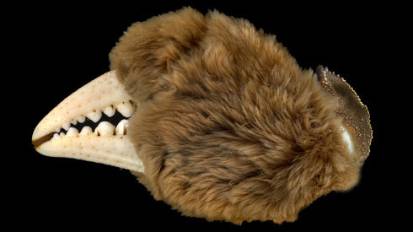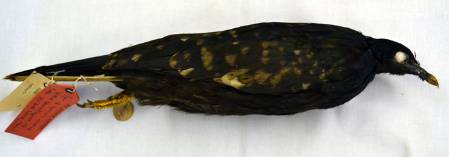A species of bryozoan transplanted to an area with increased ocean acidity has been found to grow at half the rate of those living in normal ocean conditions.
Bryozoans are coral-like animals that live in colonies and build their skeletons out of calcium carbonate. An international team including Museum researcher Dr Paul Taylor transplanted several budding colonies from their normal homes in the Mediterranean to an area near an active volcanic vent in Italy.
The undersea vent expels heat and carbon dioxide, simulating the global surface ocean acidity predicted for the year 2100 as a result of increased anthropogenic carbon dioxide emissions. According to Dr Taylor:
Entire ecosystems are threatened by ocean acidification, and this will have economic consequences because animals such as bryozoans are often habitats for the juveniles of commercially exploited fishes and crustaceans or may be in their food chains.
The bryozoan Calpensia nobilis showing normal growth at the leading edge © Lombardi et al, 2015.
During a three-month experiment, the bryozoan colonies around the vent suffered slower growth rates, the absence of some growth stages, and the corrosion of their skeletons. However, individual zooids – the tiny creatures that build the colony – were longer than normal.
Dr Taylor thinks this could be an indication of adaptation by the bryozoans to the changing environmental conditions. The colonies seemed to invest more energy in completing zooids that had already started to form rather than budding new generations. In other words, they were strengthening the existing colony rather than expanding.
Longer studies are needed along with more detailed information about how the colonies are reacting to possible future scenarios. Said Dr Taylor:
With this information, better predictions could be made of organism survival and evolution, and thus ecosystem changes, loss or survival in a changing world.
The research is published today in the journal Royal Society Open Science.
- Read the paper at the Royal Society Open Science journal
- Find out how bryozoans are used in climate change research
- Read how Dr Taylor helped rediscover a creature thought to be extinct for four million years







